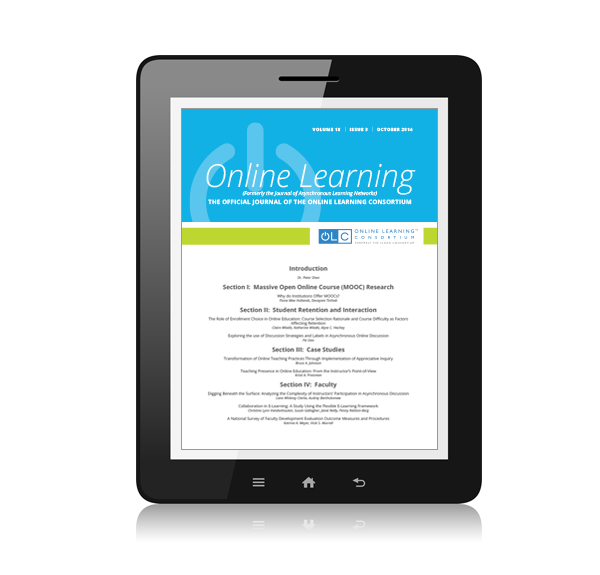Online Learning Journal
Online Learning formerly the Journal of Asynchronous Learning Networks
OLC’s pre-eminent publication promoting the development and dissemination of new knowledge at the intersection of pedagogy, emerging technology, policy, and practice in online and blended environments.

